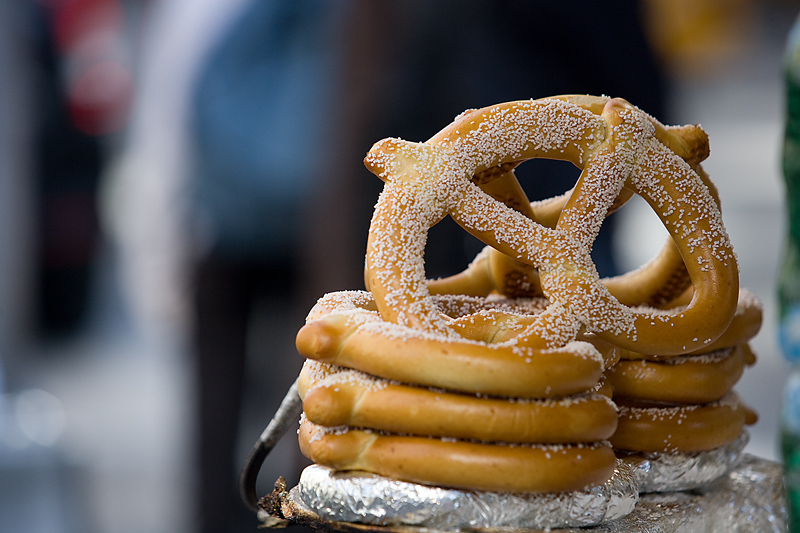
Who can resist a big, warm, and salty soft pretzel? Or do you prefer the addicting hard pretzel? April 26 is National Pretzel Day! To celebrate, I am going to look back at the snack’s “twisted” history as one of our nation’s favorite go-to snack.
SOFT PRETZELS
The soft pretzel has a long history. The exact year pretzels were created is not known for certain, but many sources suggest they were probably invented by Christian monks sometime around 610 A.D. The most widespread lore has it that Italian monks, seeking a way to reward children for learning their prayers, shaped strips of dough to resemble arms crossing the chest and gave them out as treats. They were called “pretiola,” which means “little rewards” in Latin. These early pretzels were the “soft” variety.
Other sources claim that pretzels were invented in Spain, and some say southern France. It is known once they made their way to Austria and Germany, pretzels were molded and refined by the culinary talents in almost every city in the region.
The soft pretzels had inherent religious significance; however, they also came to be associated with Lent because they did not use eggs or dairy products, which were traditionally prohibited during the period of fasting and restrictions.
In addition to the religious symbolism involved in the knot shape of the pretzel, the symmetrical loops created by the shape of the pretzel may have also been intended for practical purposes. The loops would allow the bakers to hang them on strings and sticks.
HARD PRETZELS
Hard “Bavarian” pretzels are more of a recent creation. The pretzel was introduced to America by German immigrants and flourished in the areas populated by the Pennsylvania Dutch. In the 17th century, a Pennsylvania baker accidentally overbaked his batch of pretzels, creating hard knots. He tasted the hard pretzel and discovered that he had made a rather delicious mistake. Consequently, the hard pretzel was born.
The salty snacks would last longer in an airtight setting, allowing them to be sold in stores further away from the bakery and stored on shelves for much longer. It is these qualities that allowed their popularity to grow in the United States quickly. Nearly 200 years later, the first pretzel bakery, the Sturgis Pretzel House, opened in Lititz, Pennsylvania, in 1861.
MASS PRODUCTION
Pretzels were handmade until the 1930s. The Reading Pretzel Machinery Company introduced the first automated pretzel machine in 1935. This enabled bakeries to make 245 pretzels per minute versus the 40 pretzels per minute by workers. Once factories could mass produce pretzels, they became a popular twisted treat worldwide. Pennsylvania currently produces 80% of our country’s pretzels.
DON’T FORGET…
Soft pretzels are a simple process: make the pretzel dough, roll, shape, dip in a baking soda bath, and bake. Don’t skip the baking soda bath! This bath essentially gelatinizes the outside of the pretzel, preventing it from fully “springing” during baking (as bread does) and giving pretzels their signature chewy crust. It also gives them their unique and indelible “pretzel” flavor. It is an essential step to soft pretzels.
Traditionally, this alkaline bath was made using food-grade lye. If this sounds too adventurous for your taste, never fear: baking soda makes a fine substitute. The pretzels won’t get quite the same depth of color or deep pretzel-y flavor.
CELEBRATE PRETZEL DAY!
Pretzels have come a long way from their humble religious beginnings all of those years ago. The pretzel continues to evolve. A pretzel can be hard, soft, salty, or sweet. There are different shapes and flavors available, some featuring nuts or seeds and glazes. Celebrate Pretzel Day by making your own pretzels at home.
Written by Vicki Hayman, MS, University of Wyoming Extension Nutrition and Food Safety Educator
Sources: